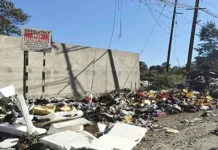ITANAGAR, 10 Apr: Members of the Arunachal Publishers & Broadcasters Guild (APBG) on Thursday submitted a comprehensive memorandum to Information & Public Relations (IPR) Minister Nyato Dukam, seeking urgent redressal of longstanding issues affecting the media fraternity of the state.
In the memorandum, the APBG reminded the minister that “a similar appeal for rate enhancement had been submitted on 16 November, 2017, which was only partially approved.” The guild expressed disappointment that, despite basing their earlier request on a scientific analysis of the cost of living index, only a nominal percentage of the proposed rates was accepted, and the manner in which the revised rates were implemented appeared arbitrary.
Highlighting the increasing financial challenges faced by local media houses, the APBG stated that the rising cost of raw materials and wages, especially after the implementation of the Majitha Wage Board recommendations, has put additional pressure on publishers. Many of them are now struggling to comply with the court orders linked to wage structures. The guild pointed out that, in the absence of a robust private advertising sector in Arunachal Pradesh, the media is heavily dependent on the state government for advertisement revenue. It expressed hope that the government would not allow any media house to shut down due to financial constraints.
The APBG also called for the state government to revise advertisement rates in a structured and timely manner, suggesting a system where rate revisions occur every two years, irrespective of political leadership. The guild raised concern over some departments bypassing the Directorate of Information and Public Relations (DIPR) norms by issuing advertisements at heavily discounted rates, which affects the sustainability of local newspapers. It said that all departments must strictly adhere to the DIPR-prescribed rates, and that the DIPR itself should not accept or circulate advertisements that do not comply with these standards.
The guild expressed appreciation for the current state government for initiating an advertising policy for digital media. However, it pressed for a formal gazette notification recognising the role of digital and electronic media, and requested the government to ensure that all state and central schemes and project advertisements are routed through local digital platforms.
The APBG also expressed concern that media organisations from outside the state often bag large advertisement deals, while local digital media are ignored. In light of this, it requested an annual allocation of sufficient funds under the information, education and communication (IEC) component to support the state’s digital and electronic media.
Further, the guild expressed appreciation for the recent adoption of a digital billing system by the government, and recommended the addition of a feature to display the real-time status of pending bills. It stated that this would ensure transparency and accountability while also easing the process of GST return filing.
The APBG also urged the government to create separate budgetary heads or cost centres for state-based and national media houses. It argued that using limited departmental funds to pay large national media companies puts local publications at a disadvantage, as even a few lakhs mean a great deal to smaller, regional media houses.
Meanwhile, APBG President Chopa Cheda voiced concern over the department’s inaction, despite repeated pleas from the guild. He said that the APBG expects a response within 10 days, hinting at “the possibility of exploring other avenues if ignored.”
Earlier, members of the APBG also met Tourism Minister PD Sona, and submitted a separate memorandum before him, with an appeal to the tourism department to “issue advertisements/promotional videos and events also to local print and digital media of the state.”


